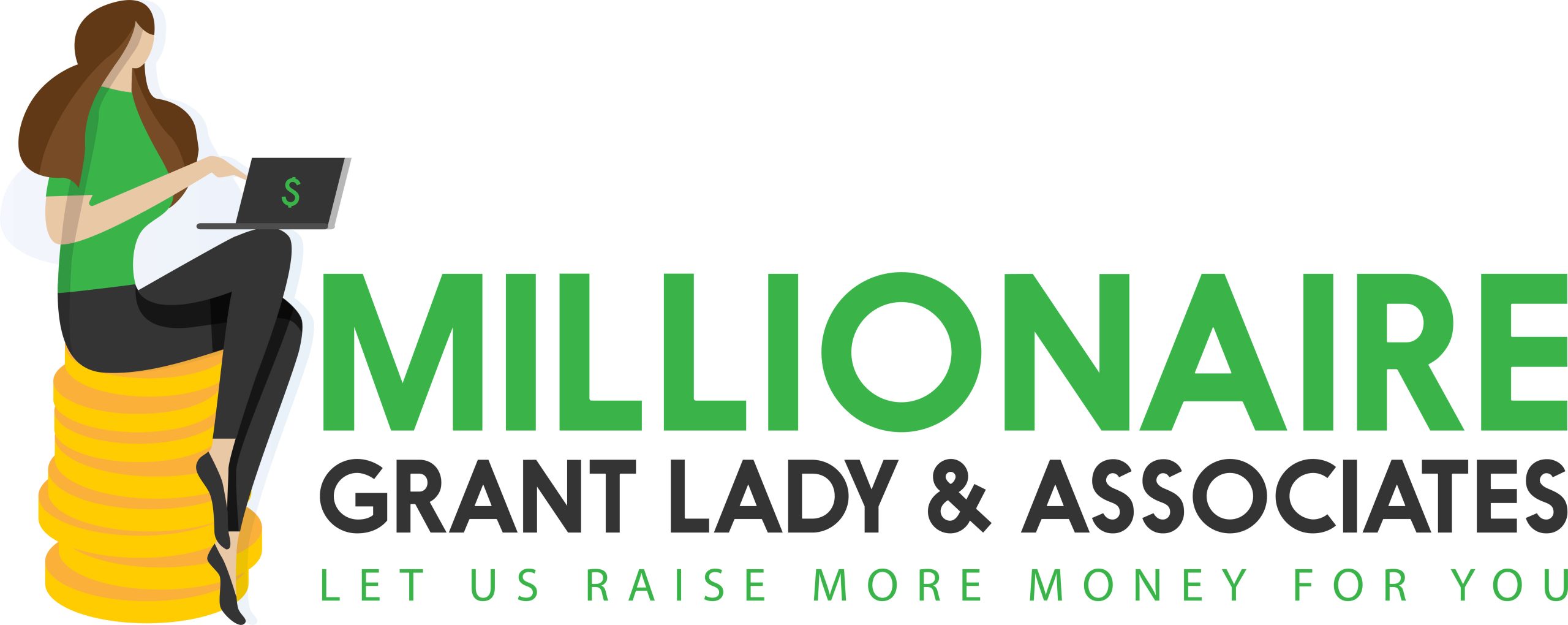The “writing” part of grant writing is a relatively small percentage of the actual work required to win grants at a high level consistently. To someone who is new to writing and submitting grants, the entire grant process can feel convoluted, overwhelming, and tedious. Even if you know that the potential funding could be enormous for your organization, the process of dealing with so many details can be tedious, time-consuming, and disheartening. Many organizations may find themselves starting grant applications but never completing them because of the time it takes to do so.
While it is important that organizations identify the right potential funders, create a compelling needs section, write a persuasive program description, and incorporate the necessary metrics, there is another very important step that can often get overlooked. One of the easiest ways to disqualify yourself from grant consideration is by not honoring a foundation’s requirements, and this includes attachments.
Unfortunately, every foundation, corporation, and state or federal department has a different list of things they want to see. At minimum, you will always want to submit your IRS Determination Letter, proving that you’re a non-profit, and a program budget (or overall budget, if you’re looking for general operating funding). But many foundations will require much more than these two attachments.
Each year, the team at Millionaire Grant Lady and Associates prepares and submits hundreds of applications to foundations across the country. If you are preparing grant applications or working with a consultant to submit applications, here’s what you need to know about required attachments:
- Why all the extra stuff?
- What attachments will we need?
- How do we prepare to apply?
- How do we get help?
Why all the extra stuff?
As always, it is important to remember that grant reviewers and foundation employees are people, too. While all these attachments may seem superfluous and frustrating to include, especially if you don’t have them readily available, you can assume that numerous board meetings and discussions led to the foundation creating, refining, and implementing their grant application process.
Foundations want to invest their money in organizations and programs they can trust. They want assurances that their money is going to help underserved communities and people in need in effective, meaningful ways. When foundations require budgets, tax documents, or even board giving statements, it isn’t because they want to know every financial detail of your organizations innerworkings. Grant reviewers are tired; they aren’t trying to snoop on your CEO’s salary. They just want to know where their money is going.
When you provide a foundation with a budget that makes sense for the program you are trying to implement, it shows that you know what you are doing. When you provide your most recent tax return or an audit, it shows that your organization keeps records and can be transparent with finances. Most of the required attachments are the foundation’s way of checking your organization’s fiscal responsibility. If you can show a track record of success, you are halfway to forming a positive relationship with a funder.
What attachments will we need?
There are several common attachments that many organizations require and are considered “standard attachments.”
- IRS Determination Letter: This is a letter from the IRS that states you are a non-profit and that funds given to you are tax deductible. Further, the IRS letter includes an issuance date that foundations use as the beginning date for your nonprofit. Many foundations only give grants to certified 501(c)3 non-profits and need proof of this to distribute funds.
- Program Budget: An ideal program budget will include both revenue and expenses, and these amounts should balance or come close to it. The program budget should include every item that is required to run the program—including staff, transportation, technology, and the building. A program budget that makes sense shows foundations that you have a clear plan for how you will implement and fund the program.
- Organization Budget: Even if you are requesting grant funds to support a specific program, some foundations want to see the overall organization budget. This budget includes all the revenue and all of the expenses for the entire organization. The budget should balance or come close to it. By showing foundations that the organization budget balances, foundations can see that the organization overall is fiscally stable. This should also be your “board-approved” version of your organization budget for the year.
- Form-990 or Audited Financial Statement: A 990 is the tax return form nonprofits are required to file. Additionally, foundations over a certain size are required to have an audit. Audits and 990s show foundations whether or not the organization’s assets are growing over time or dwindling. Audits and 990s also show foundations what percentage of revenue is spent on administration versus program expenses. Many foundations prefer supporting organizations who do not run a deficit and who spend most of their funding on program-related costs. By providing an audit and 990, this will give foundations the reassurance they need that your organization’s books are in order, that you are fiscally sound, and that you will keep track of and use their funding responsibly.
- Board of Directors (+ affiliations/giving statement): While most foundations request a board of directors list, each foundation typically wants different information. They may want to know where each member of the board of directors lives and works; they may want to know their race and gender; they may want to know how long they have been on the board and when their term ends. Each piece of information helps the foundation better understand the board that guides your organization. Foundations ultimately want to know that the people leading your organization are invested in the work you are doing and have the experience to make wise decisions.
- Other Funding Sources: Foundations need to feel that their funding is necessary to your work, but they do not want to be the only funder of your work. When you provide a list of other funders, this shows foundations that you have other support for this work, and when you have many other funders in your area, it can provide some positive pressure for foundations to support you, too.
Some funders, especially banks and larger funders, like to have even more information. These attachments may be required depending on which types of grants you apply for.
- Prior Year’s Financial Documents: Foundations sometimes ask for the prior year’s statement of activities and/or statement of financial position. They will then often ask for current financials. By requesting the prior year’s financial documents as well as the current financials (i.e. a statement of financial position that is less than 6 months old), the foundation is able to assess your organization’s financial health.
- Budget to Actuals: When a foundation requests budget to actuals, they want to see what the organization or program budget was planned to be versus what was actually spent. The budget to actuals comparison helps the foundation better understand your organization’s planning ability—how close did you get to predicting the amount of money you would bring in and spend versus the amount of money you actually brought in and spent? If your budget to actuals shows more than a 20% difference, I recommend you provide an explanation—did you get much more grant funding than anticipated? Did a federal grant program end, leaving you with a deficit? Did you see a surge in need for services? When you explain these situations, foundations can better understand your organization’s financial story and current financial needs.
- Key Staff: similar to the board list, funders want to see that the people working for and leading your organization have the credentials and experience to do the job well. This attachment is especially important for federal grants, which will often have an entire section dedicated to the resumes and experience of the people who will be implementing the program.
- Service Numbers: In any grant application, you need to include numbers that show the range of your reach. However, some foundations will require a more detailed analysis. For example, they may require an attachment that shows a breakdown of participants by age, race/ethnicity, gender, or other status. Foundations may require you to provide both duplicated and unduplicated numbers for participants. By providing this information to foundations, you can help them better understand who you serve and how you serve them.
There are also some less common attachments that you may not expect, but which may still be required by certain funders.
- Charter and By-Laws: some foundations want to see how your nonprofit has been organized from its inception.
- Video, brochure, or news article: some foundations invite you to share promotional materials with them. These can be an opportunity to share pictures and videos that highlight the unique work your organization is doing.
- About the Organization: this is typically a one-page summary of your entire organization’s founding, mission, vision, goals, and work.
How do we prepare to apply?
Though it would be impossible to anticipate every potential additional attachment future funders may require of your organization, there are some practical steps you can take to make the process easier on yourself.
- Keep your budgets up-to-date: Funders often expect you to submit a budget for the year you are requesting funds. This means for a funding request sent in January 2025, you will need a 2025 budget. The sooner you can get a board approved budget for a fiscal year, the better. Approving budgets as close to the start of your fiscal year as you can is good grant-seeking practice.
- File your taxes early: Most foundations don’t expect your 990 to be available as soon as we turn into the new year, but the 990 is required every year. By providing foundations with 990s and audits from the most recent fiscal year, you can demonstrate to them that the organization is fiscally responsible.
- Track your service numbers: Foundations don’t need up-to-the-minute data, but they do like to have an idea of how many people their gift will impact. You will streamline your own process if you keep track of things on the front end. When you track this data, it is good to also track items like age, race/ethnicity, and gender (if tracking this does not impede your work). We recommend tracking this all year and then compiling it at the completion of every year to use it as your standard data.
- Collect meaningful stories: Your finances and numbers are only part of your organization’s story. When you come across a story within your organization that moves your soul, remember, it will move funders’ souls as well. We want your application to be the one they stay up at night thinking about because of the power of your organization’s work. Collect these stories, photos, and consent to share the story/photo as you go, so that when the opportunity comes around, you are ready with a powerful client story that moves funders’ hearts.
- Run your organization and programs well: The most important thing you can do for yourself as a grantseeker is to have good programs and be organized. Well-run organizations that demonstrate a measurable impact on the community are already a step ahead of the competition.
How do we get help?
This is the easiest part of dealing with grant attachments: schedule a call with my team today. Attachments and grant applications can be tedious and confusing, but you don’t have to tackle them on your own. My team has seen all kinds of requirements over the years, and we are ready to work with you to create a clear, compelling application that meets foundation’s requirements while moving their hearts. Our team has raised over $100 million in total funding for our clients, while saving them time and money. The average MGL client only spends two total hours on grants in an entire month. We take the rest off your plate so you can continue focusing on your important work in the world. If you want to give yourself the best chance of success, attach yourself to a winning team.



